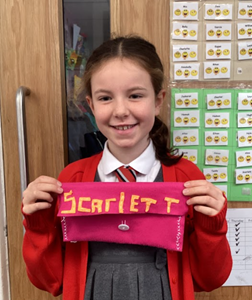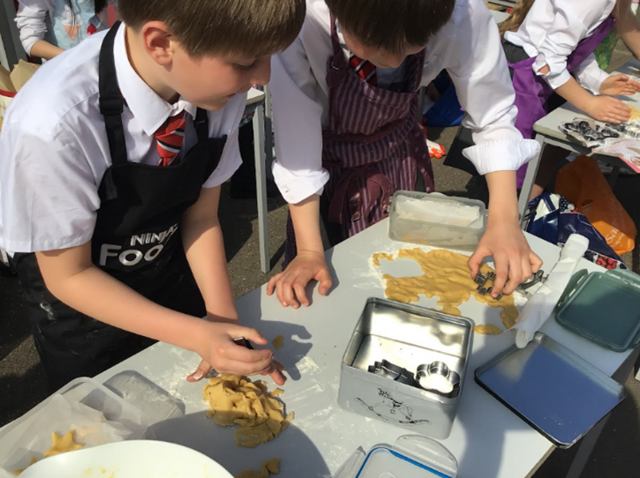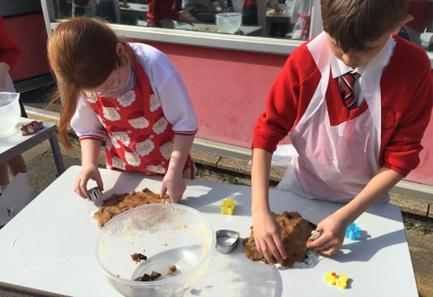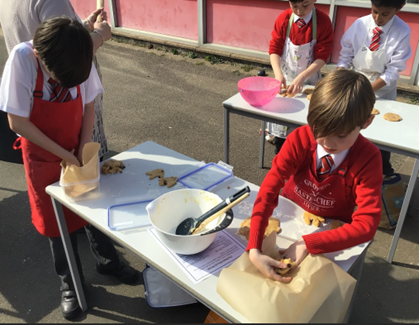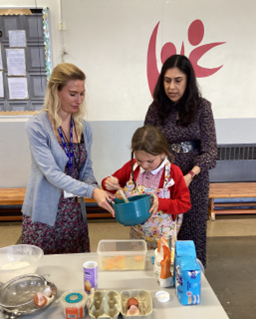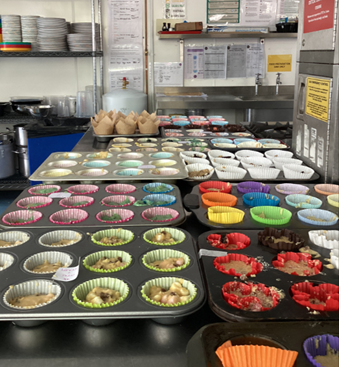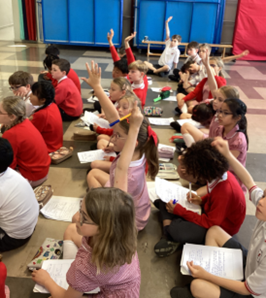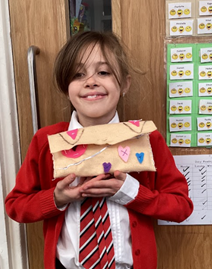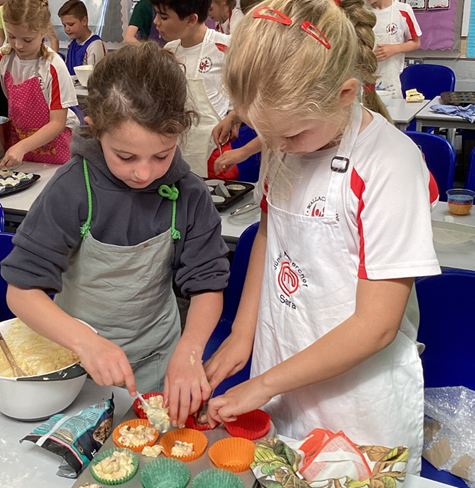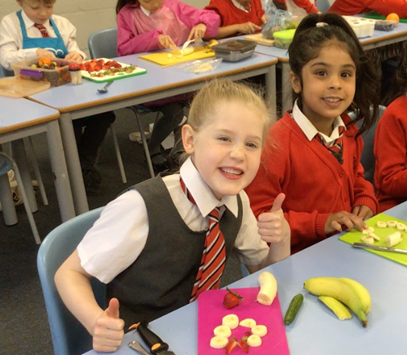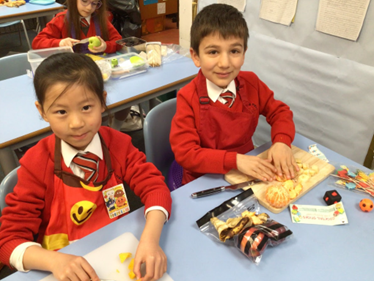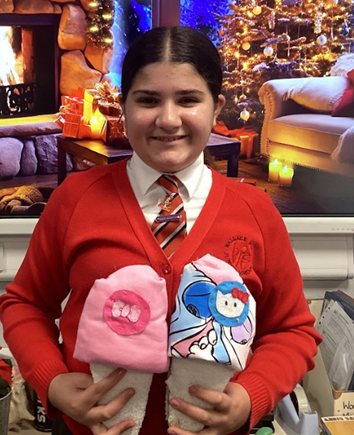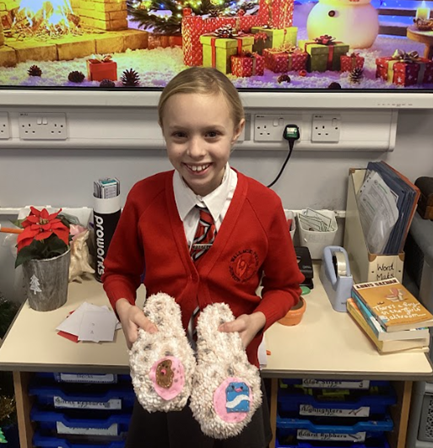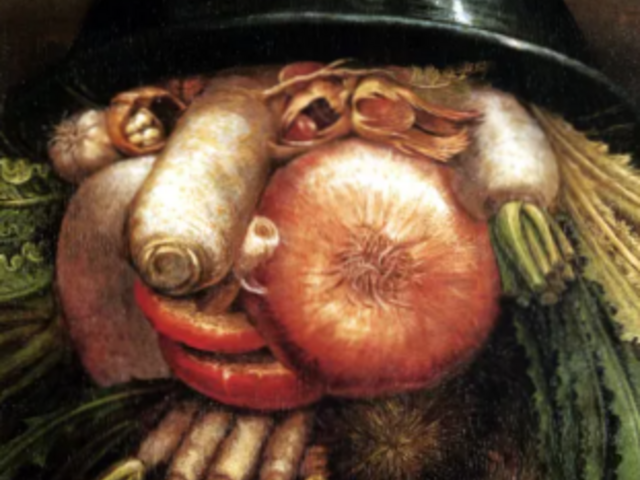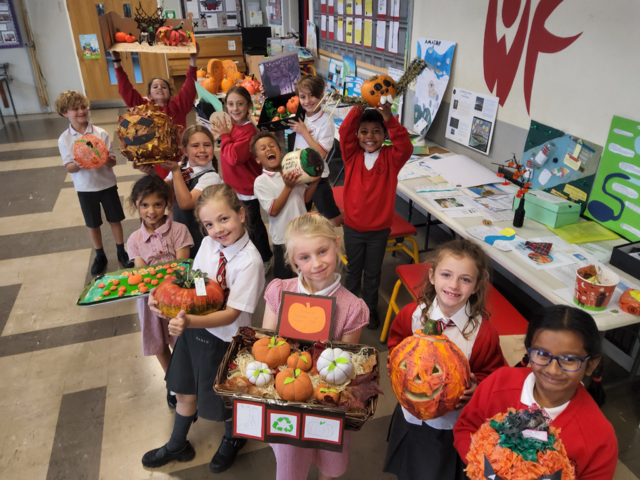Welcome to Design and Technology at Wallace Fields Junior School
At Wallace Fields Junior School we follow the ‘Design, Make, Evaluate’ approach to the teaching of DT, as outlined in the National Curriculum Programmes of Study document. The technical skills which we teach encompass the following areas: Construction, Mechanisms, Textiles and Food and Nutrition. We feel that the teaching of Food and Nutrition is a great importance and holds great relevance in current times. For this reason, children will study a Food and Nutrition unit every year, in which children are taught the skills of both hygiene and cooking/ preparing food.
Click here or on the image below to see a loom video about art and D&T at Wallace Fields Junior School
D& T Update
This table outlines the different Design and Technology projects that each year group undertakes each term.
| Year 3 | Year 4 | Year 5 | Year 6 | |
|---|---|---|---|---|
| Autumn | Creating Packaging | Sewing money Containers | Shelters | Slippers |
| Spring | Fruit Salads | Baking muffins | Alarm Systems | Hot-cross Buns |
| Summer | Electrical Nightlights | Pop-up Books | Biscuits | Fairground Rides |
Our intent is that pupils use their creativity and imagination to design and make products that solve real and relevant problems within a variety of contexts, considering their own and others’ needs, wants and values. By doing so, pupils will acquire a broad range of subject knowledge and draw on cross curricular knowledge and skills such as mathematics, science, computing and art.
For further details on the teaching of DT across the school, please view our progression map.
DT Progression Map
Curriculum Intent
At Wallace Fields Junior School, we value Design and Technology (D&T) as an important part of a child’s opportunity to access a broad and balanced curriculum. Our intent is to provide children with a variety of opportunities to develop their skills in the four key areas of D&T: designing, making, evaluating and technical knowledge.
The National Curriculum for Design and Technology aims to ensure that all pupils:
- Develop the creative, technical and practical expertise needed to perform everyday tasks confidently and to participate successfully in an increasingly technological world
- Build and apply a repertoire of knowledge, understanding and skills in order to design and make high-quality prototypes and products for a wide range of users
- Critique, evaluate and test their ideas and products and the work of others
- Understand and apply the principles of nutrition and learn how to cook
Curriculum Implementation
The implementation of the D&T curriculum at Wallace Fields Junior School is based on the National Curriculum and is linked to a variety of topics that encourage cross-curricular links, creativity and opportunities for both self and peer reflection. Furthermore, we promote D&T around the school through displays, a whole school D&T showcase and homework projects.
We teach D&T with links to overall termly and half termly topics Wolf Wilder and shelters, Shang Dynasty alarm systems and pop-up books linked to minibeasts. Some of the food technology units that are taught are: fruit salad, healthy muffins, flapjacks and hot cross buns. More details of the curriculum can be found in the progression map.
The National Curriculum for Design and Technology is split into four main areas and aims to ensure that all pupils:
Design
- Use research and develop design criteria to inform the design of innovative, functional, appealing products that are fit for purpose, aimed at particular individuals or groups
- Generate, develop, model and communicate their ideas through discussion, annotated sketches, cross-sectional and exploded diagrams, prototypes, pattern pieces and computer-aided design
Make
- Select from and use a wider range of tools and equipment to perform practical tasks accurately
- Select from and use a wider range of materials and components, including construction materials, textiles and ingredients, according to their functional properties and aesthetic qualities
Evaluate
- Investigate and analyse a range of existing products
- Evaluate their ideas and products against their own design criteria and consider the views of others to improve their work
- Understand how key events and individuals in design and technology have helped shape the world
Technical knowledge
- Apply their understanding of how to strengthen, stiffen and reinforce more complex structures
- Understand and use mechanical systems in their products
- Understand and use electrical systems in their products
- Apply their understanding of computing to program, monitor and control their products
Curriculum Impact
Within (D&T), we strive to instill a sense of competence and interest in the world of technology. We focus on a planned progression of skills and knowledge to ensure that children are being appropriately supported and challenged across each year group. We aim to measure the impact of our curriculum by:
- Images and videos of the children’s practical learning
- Interviews with pupils about their learning (pupil voice)
- Marking work in the children’s D&T booklets
- Children’s reflections of their own and other’s learning
- Assessment of children’s understanding of topic vocabulary at the beginning and end of a unit
Teaching Design and Technology to children with special needs
We teach Design and Technology (D&T) to all children, whatever their ability. D&T is an important part of the school curriculum policy in line with providing a broad and balanced curriculum for all children. We provide learning opportunities that are matched to the needs of children with special educational needs. Our lessons take into account any information from the children’s SEND support arrangements that need to be considered. As D&T is a creative and open-ended subject, it is imperative that children are given the opportunity to experiment with a range of materials and products before making their own final design. Click on this link for further information about SEND and inclusion
National Curriculum
To find out more about the national curriculum for Design & Technology in Key Stage 2 that the school is following click here.
